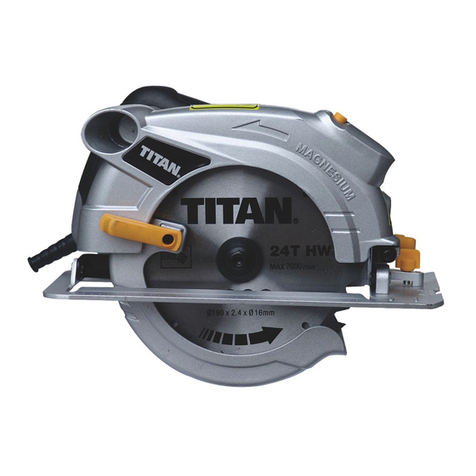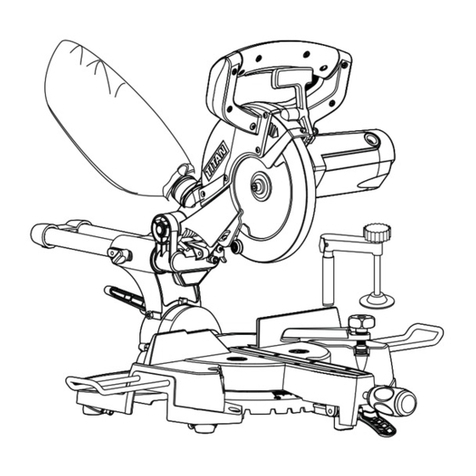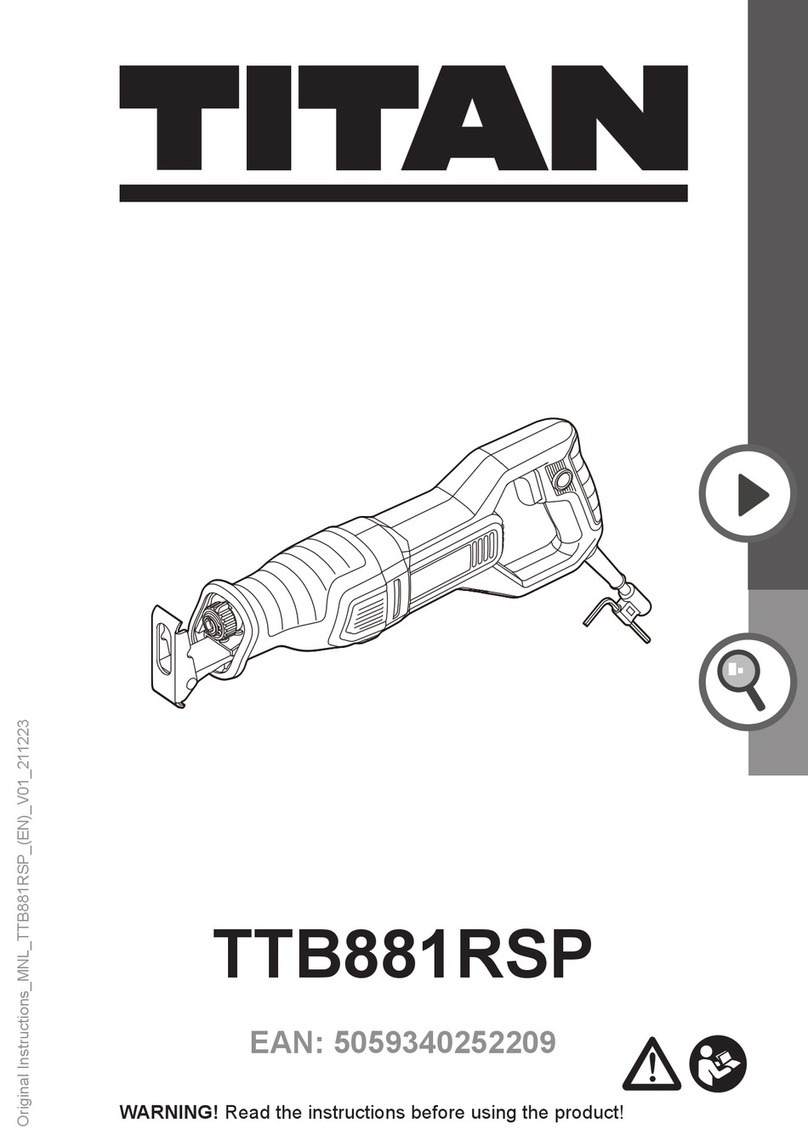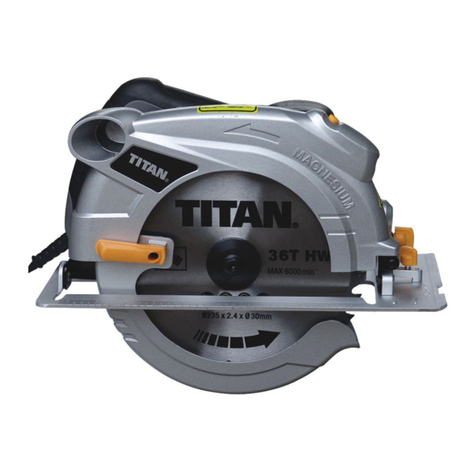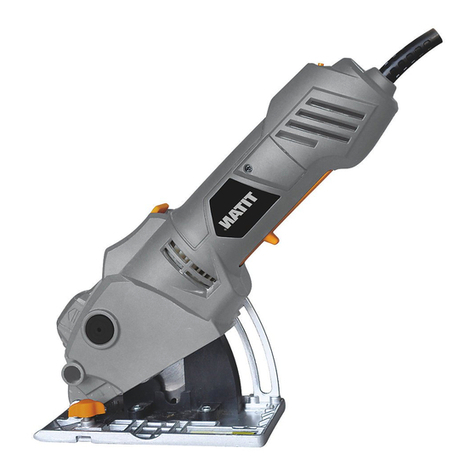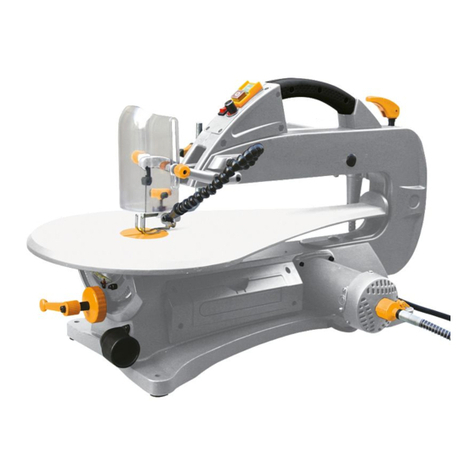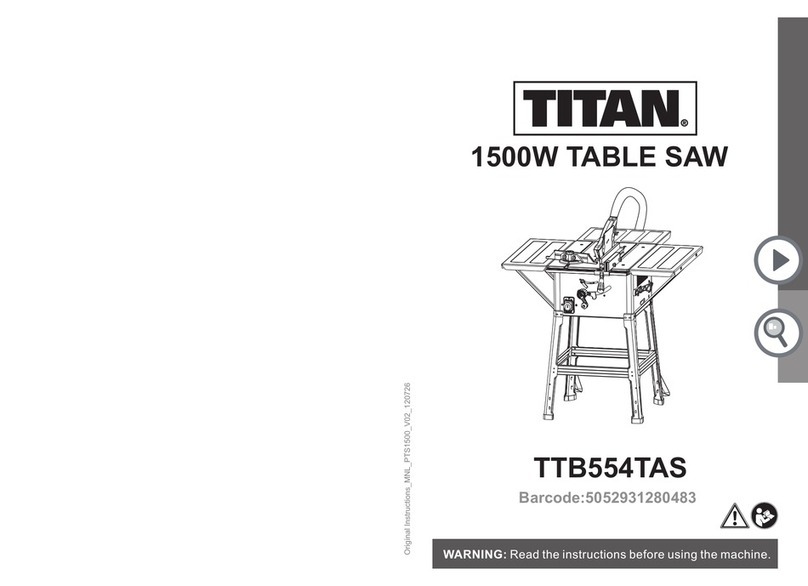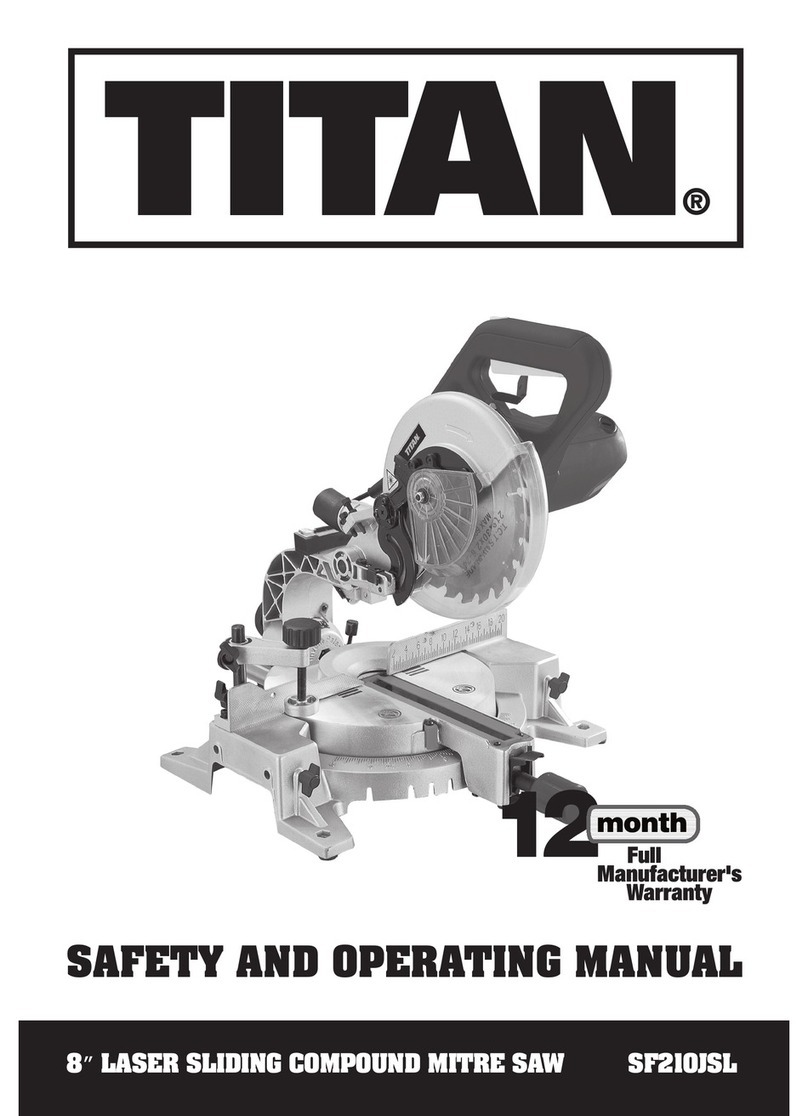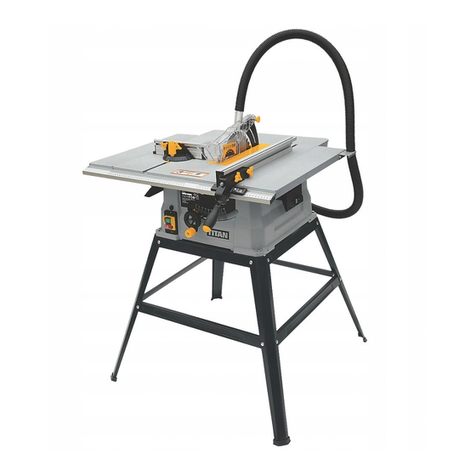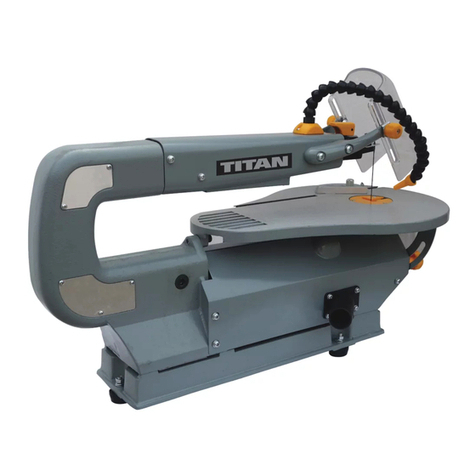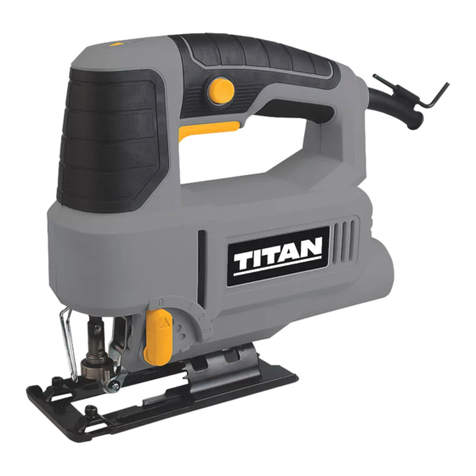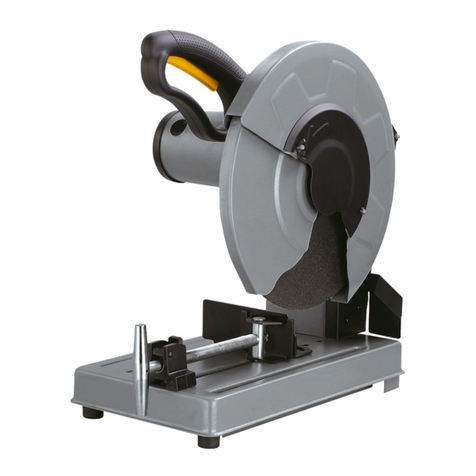hand.
13. Do not overreach.
- Keep proper footing and balance at all times.
14. Maintain tools with care.
- Keep cutting tools sharp and clean for better and safer performance.
- Follow instruction for lubricating and changing accessories.
- Inspect tool cords periodically and if damaged have them repaired by an
authorized service facility.
- Inspect extension cords periodically and replace if damaged.
- Keep handles dry, clean and free from oil and grease.
15. Disconnect tools.
- When not in use, before servicing and when changing accessories such as
blades, bits and cutters, disconnect tools from the power supply.
16. Remove adjusting keys and wrenches.
- Form the habit of checking to see that keys and adjusting wrenches are removed
from the tool before turning it on.
17. Avoid unintentional starting.
- Ensure switch is in “off” position when plugging in.
18. Use outdoor extension leads.
- When the tool is used outdoors, use only extension cords intended for outdoor
use and so marked.
19. Stay alert.
- Watch what you are doing, use common sense and do not operate the tool
when you are tired.
20. Check damaged parts.
- Before further use of tool, it should be carefully checked to determine that it will
operate properly and perform its intended function.
- Check for alignment of moving parts, binding of moving parts, breakage of
parts, mounting and any other conditions that may affect its operation.
- A guard or other part that is damaged should be properly repaired or replaced
by an authorized service centre unless otherwise indicated in this instruction
manual.
- Have defective switches replaced by an authorized service centre.
- Do not use the tool if the switch does not turn it on and off.
21. Warning.
- The use of any accessory or attachment other than one recommended in this
instruction manual may present a risk of personal injury.
22. Have your tools repaired by qualified person.
-This electric tool complies with the relevant safety rules. Repairs should only be
carried out by qualified persons using original spare parts, otherwise this may
result in considerable danger to the user.
23. If the replacement of the supply cord is necessary, this has to be done by
the manufacturer or his agent in order to avoid a safety hazard.
24. For tools intended to be connected to a water supply.
– for tools provided with a PRCD: Never use the tool without the PRCD delivered
with the tool.
